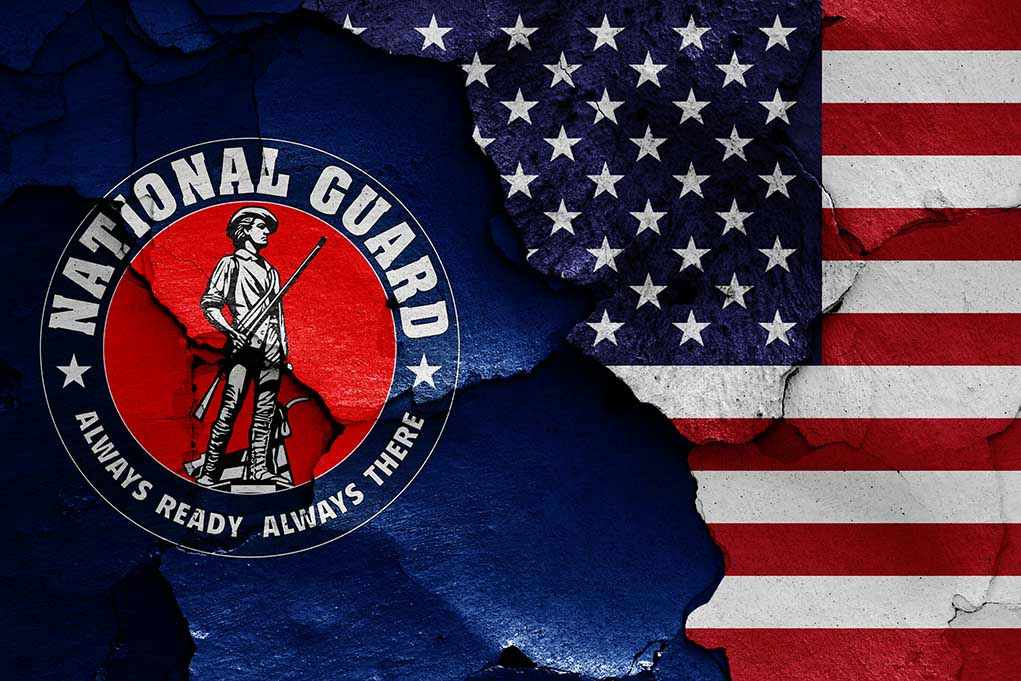
A new federal initiative threatens to expand military presence in U.S. cities, sparking concerns over civil liberties and government overreach.
Story Highlights
- Trump administration evaluates a military reaction force for domestic unrest.
- Proposal involves 600 National Guard troops with rapid deployment capabilities.
- Deployment could include military-style weapons and riot gear.
- Significant concerns over legal, political, and public impacts.
Military Force Proposal Raises Concerns
The Trump administration is evaluating a plan to establish a Domestic Civil Disturbance Quick Reaction Force (QRF), composed of approximately 600 National Guard troops. The force would be capable of deploying within an hour to U.S. cities experiencing unrest. This proposal, detailed in internal Pentagon and National Guard documents, has been reported on by multiple media outlets, including The New Republic and The Independent. The plan involves basing troops in Alabama and Arizona, with rotations capped at 90 days to prevent burnout.
Critics are concerned about the potential erosion of civil liberties and the precedent set by deploying military forces in civilian contexts. The proposal has sparked debate over the legality and necessity of such a force, which aims to address domestic unrest swiftly. Observers have highlighted the implications for federal-state relations, especially regarding presidential discretion and the use of military forces in civilian protests. Internal documents acknowledge the significant concerns related to legal, political, and public impacts.
Historical Context and Implications
The use of military forces in domestic settings is constrained by the Posse Comitatus Act, which limits federal troops in law enforcement roles. The QRF proposal suggests leveraging Title 32 of the U.S. Code, allowing state-controlled but federally funded National Guard deployments with expanded powers, including arrest authority during unrest. This approach echoes the legal rationale used during the 2020 protests, raising concerns about the expansion of executive power and the potential chilling effect on lawful protests.
The administration’s push for a rapid-deployment force aligns with its law-and-order agenda, emphasizing crime control. However, the plan has faced criticism from state governors and local leaders, who view it as an overreach of federal authority. The proposal’s reliance on military-style interventions in civilian contexts risks altering civil-military norms and affecting the relationship between federal and state governments.
Potential Impact and Future Considerations
The proposed QRF has significant implications for civil liberties, federalism, and the role of military forces in domestic security. If implemented, the force could normalize military-style interventions in civilian protests, potentially chilling protest activity. The plan’s feasibility remains speculative, with internal documents citing unresolved issues such as Guard availability, costs, and logistical challenges. The earliest practical implementation would be through the Pentagon’s budget process in FY2027.
The proposal’s political and social impacts could be profound, potentially intensifying polarization over crime, protest, and federalism. Legal challenges and congressional oversight are likely as stakeholders grapple with the implications of expanded military presence in civilian settings. The administration’s narrative of a national security threat must be balanced against the risks of undermining constitutional protections and local governance.
Sources:
The New Republic report summarizing WaPo-reviewed documents and quoting state officials.
The Bulwark analysis on D.C. home rule, presidential discretion, and civil liberties implications.
Straight Arrow News brief noting 1-hour deployment capability.












